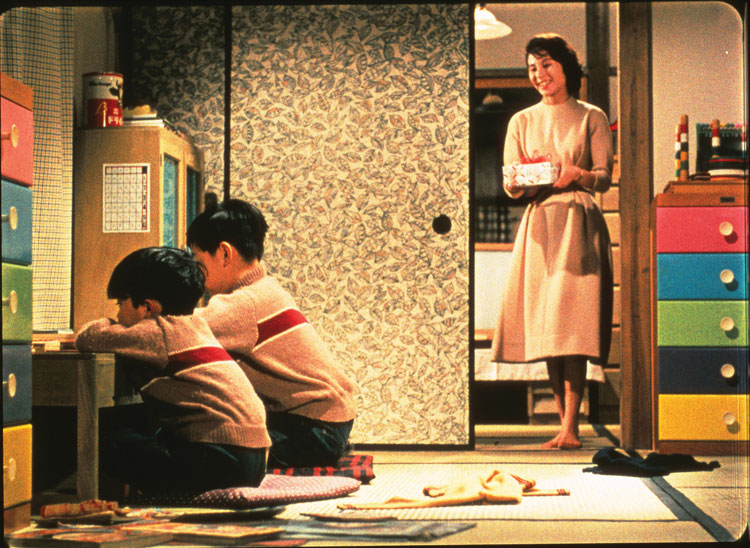“Cinematography* does not function as the embellishment of a story. It isn’t a
means of breathing life into a script. It isn’t the application of coloured pencils to an
already satisfactory line drawing. It is the story. The meaning of a work is
embedded and implicit in its form.”
In class we touched on the idea of how the cinema experience holds more importance than the story itself. After watching the film Good Morning (1959) directed by Yasujiro Ozu I have a better understand of what it means to become engrossed in an experience and feeling rather than a dynamic narrative. Ozu is all about being present in the moment. He is famous, or maybe infamous for having people wonder ‘umm is something going to happen..?’ during his films. But that is the point he is trying to make; when nothing happens, plenty is happening. In Good Morning we get a close look at a suburb of Tokyo where two boys begin a silence strike to press their parents into buying them a television set, hence the lingering feeling that we are waiting for something to happen. While not much occurs dramatically, we get a snapshot at a world at the crux of change.
The lighthearted comedy explores inter-generational family tensions, post-war Western influences on Japan and observations of human behavior. Ozu is famous for stubbornly doing things his way without too much regard for what might be more ‘popular.’ His films are about capturing the essence of the Japanese lifestyle, in his own uniquely quirky and charming style.  As an audience we have to work to stay focused and lull ourselves into a more accepting mindset to become fully engrossed in his slice of life films.
As an audience we have to work to stay focused and lull ourselves into a more accepting mindset to become fully engrossed in his slice of life films.
His framing is delightful but doesn’t have to symbolize anything imperative to the plot. A few times in the film we see people walking across the hill through the narrow gaps of the suburban sprawl. It gives us a picturesque feel of the whole town and the people just look so tiny and cute. I had a thought that it would be so fun to live there and wave at my friends from afar as I see them walking home from school. Ozu’s pleasing cinematography appeals to our ability to be content as a welcomed observer.

A polar opposite to this would be Hitchcock, who creates tension by holding the audiences attention with suspense. We constantly think, “what could happen next!?”
The form is the Story
In the film, nothing seems to be happening, but the world is changing. Women were starting to work, the popularity of TVs were threatening the big screen and the younger generation were starting to question the formalities their culture. The phrase and title of the film, “Good Morning” refers to the small talk and maddening politeness demonstrated by the older generation.
The themes of big and small, binary and balance are reflected in the way that the film is constructed. The boys are lined up to show their comical difference in size, framing is neat and organised (like their homes and culture).




 3.
3.





